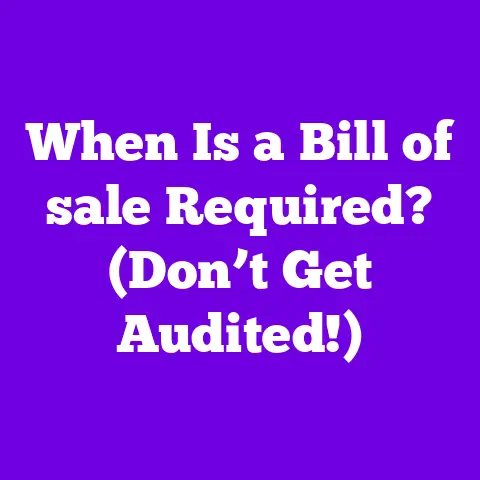When a State Levies a sales Tax (Don’t Overpay!)
Imagine this: You’re about to make a significant purchase in 2025, perhaps a new appliance or a piece of furniture.
You’ve budgeted carefully, accounting for the advertised price.
But then, you get to the checkout, and the final total is significantly higher than expected.
The culprit?
Sales tax.
It’s a situation we’ve all faced, but in 2025, with the ever-shifting landscape of state tax laws, being unprepared could cost you even more.
As states grapple with evolving economies and the continued surge of digital commerce, sales tax policies are undergoing constant revisions.
Understanding these changes is no longer optional; it’s essential for both consumers and businesses to avoid overpayment and ensure compliance.
The Evolution of Sales Tax in the United States
The concept of sales tax in the U.S.
isn’t as old as you might think.
While some states experimented with similar levies earlier, the first broad-based sales tax was introduced in Mississippi in 1930, during the Great Depression.
Facing severe economic hardship, the state sought a new revenue stream, and the sales tax proved to be a viable solution.
The idea quickly gained traction, and by the end of the 1930s, several other states, including California and Illinois, had adopted their own versions of the sales tax.
Initially, these taxes were relatively simple, applying to a limited range of tangible goods.
However, as the economy diversified and consumer spending patterns changed, so too did the scope and complexity of sales tax.
The legal framework surrounding sales tax is rooted in the Tenth Amendment to the U.S.
Constitution, which reserves powers not delegated to the federal government to the states.
This means that each state has the authority to establish its own sales tax laws, rates, and regulations.
There is no federal sales tax.
This decentralized system has led to a patchwork of different rules across the country, making compliance a challenge for businesses operating in multiple states.
A pivotal moment in the evolution of sales tax came with the rise of e-commerce.
For years, online retailers argued that they were not required to collect sales tax in states where they didn’t have a physical presence, relying on a 1992 Supreme Court decision, Quill Corp.
v.
North Dakota.
This gave online businesses a significant competitive advantage over brick-and-mortar stores, who were obligated to collect sales tax.
However, this changed dramatically in 2018 with the Supreme Court’s decision in South Dakota v.
Wayfair, Inc. The Court overturned the physical presence rule, ruling that states could require online retailers to collect sales tax even if they didn’t have a physical location in the state.
This decision opened the floodgates for states to pursue online sales tax revenue, leading to a surge in new laws and regulations.
According to a report by the Government Accountability Office (GAO), states could collect an estimated \$8 to \$23 billion more in revenue per year as a result of the Wayfair decision.
This increased scrutiny on sales tax collection and compliance has forced businesses to adapt quickly, investing in new technologies and processes to manage their obligations.
As of 2023, all states with a sales tax now require online retailers to collect it based on economic nexus, rather than physical presence.
(Source: Streamlined Sales Tax Governing Board)
Understanding Sales Tax in 2025
Looking ahead to 2025, several factors suggest that sales tax laws and rates will continue to evolve.
States are facing ongoing budgetary pressures, driven by factors such as increased healthcare costs, infrastructure needs, and the lingering economic effects of the COVID-19 pandemic.
These pressures are likely to prompt states to seek new revenue sources, and sales tax is often an attractive option.
I anticipate that many states will consider increasing their sales tax rates or expanding the base of taxable goods and services.
For example, some states may look at taxing digital services such as streaming subscriptions or online gaming, which have become increasingly popular in recent years.
Other states might consider eliminating certain exemptions or deductions, further broadening the tax base.
For instance, California has been debating expanding its sales tax to include certain services, and while no changes are confirmed for 2025, the debate is ongoing.
Similarly, New York is considering legislation to tax digital advertising services.
The calculation of sales tax itself is relatively straightforward: it’s a percentage of the purchase price of taxable goods and services.
However, the complexity lies in determining which items are taxable and which are exempt.
Each state has its own list of exemptions, which can vary widely.
Common exemptions include groceries, prescription drugs, and certain types of clothing.
In 2025, I expect increased scrutiny on the classification of goods and services for sales tax purposes.
As new products and services emerge, states will need to determine how they fit into the existing tax framework.
This could lead to confusion and uncertainty for both consumers and businesses.
The Impact of Sales Tax on Consumers
Sales tax changes directly impact consumers’ purchasing power, budgeting, and financial planning.
When sales tax rates increase, the cost of goods and services rises, effectively reducing the amount of money consumers have available for other expenses.
This can be particularly challenging for low-income households, who may spend a larger proportion of their income on taxable goods.
One common pitfall that consumers face is a lack of awareness about sales tax rate changes.
States often announce these changes well in advance, but many consumers don’t pay attention to the news or read the fine print.
As a result, they may be surprised when they get to the checkout and find that the final price is higher than expected.
Another area of confusion is sales tax exemptions.
Many consumers are unaware of the specific exemptions in their state, which can lead them to overpay sales tax on eligible items.
For example, some states offer sales tax holidays on certain items, such as school supplies or clothing.
If consumers aren’t aware of these holidays, they may miss out on the opportunity to save money.
Let’s consider a scenario: A consumer in Texas is purchasing new furniture for their home in 2025.
They are unaware that Texas offers a sales tax exemption on certain energy-efficient appliances during a specific period.
Because of this, they pay sales tax on a refrigerator that would have otherwise been exempt, resulting in an overpayment of several hundred dollars.
Staying informed about these exemptions is crucial to avoid such situations.
Accurate sales tax reporting and remittance are essential to avoid penalties and legal issues.
States conduct audits to ensure that businesses are complying with sales tax laws, and those found to be in violation can face hefty fines, interest charges, and even criminal prosecution.
According to a survey by Avalara, a tax compliance software company, 47% of small businesses find sales tax compliance to be “very” or “extremely” challenging.
This highlights the significant burden that sales tax places on businesses, particularly those with limited resources.
To ensure compliance and avoid over-collection from customers, businesses can implement several strategies.
One is to invest in tax automation software, which can help them calculate sales tax rates, track exemptions, and generate reports.
Another is to establish clear procedures for collecting and remitting sales tax, including training employees on sales tax laws and regulations.
I spoke with Sarah Jones, the owner of a small online retail business, about her experience with sales tax compliance.
“After the Wayfair decision, we knew we had to get serious about sales tax,” she said.
“We invested in tax automation software, and it has made a huge difference.
It’s saved us time and money, and it’s given us peace of mind knowing that we’re complying with the law.”
Strategies to Avoid Overpaying Sales Tax
Whether you’re a consumer or a business owner, there are several actionable steps you can take to avoid overpaying sales tax in 2025.
For Consumers:
- Stay Informed: Keep up-to-date on sales tax rate changes and exemptions in your state.
Subscribe to newsletters from your state’s Department of Revenue or follow them on social media. - Check Your Receipts: Review your receipts carefully to ensure that you’re being charged the correct sales tax rate and that any applicable exemptions are being applied.
- Take Advantage of Sales Tax Holidays: Plan your purchases around sales tax holidays to save money on eligible items.
- Keep Records: Maintain records of your purchases, especially those that may be eligible for exemptions.
This will make it easier to file a claim for a refund if you’ve overpaid sales tax.
For Businesses:
- Invest in Tax Automation Software: Use technology to streamline your sales tax compliance process and reduce the risk of errors.
- Establish Clear Procedures: Develop clear procedures for collecting and remitting sales tax, and train your employees on these procedures.
- Monitor Sales Tax Laws: Stay informed about changes in sales tax laws and regulations in the states where you operate.
- Conduct Regular Audits: Perform regular internal audits to ensure that you’re complying with sales tax laws and that your systems are working correctly.
Here’s a checklist of common exemptions and deductions that consumers and businesses should be aware of:
- Groceries: Many states exempt groceries from sales tax.
- Prescription Drugs: Prescription drugs are typically exempt from sales tax.
- Clothing: Some states offer exemptions on certain types of clothing, particularly children’s clothing.
- Manufacturing Equipment: Many states offer exemptions on manufacturing equipment used in the production of goods.
- Resale Certificates: Businesses can use resale certificates to purchase goods for resale without paying sales tax.
Conclusion
As we’ve explored, sales tax is a complex and ever-evolving area of law that can have a significant impact on both consumers and businesses.
In 2025, with states continuing to grapple with economic challenges and the growth of digital commerce, it’s more important than ever to understand sales tax and take steps to avoid overpayment.
By staying informed about state-specific regulations and tax rates, using technology to manage sales tax obligations, and taking advantage of available exemptions and deductions, you can ensure that you’re paying only what you owe and avoiding costly mistakes.
Remember, sales tax is not a static concept.
It’s a dynamic landscape that requires ongoing attention and adaptation.
Don’t wait until it’s too late.
Take charge of your sales tax knowledge and practices today to ensure that you’re not falling victim to overpayment in 2025 and beyond.
The effort you put in now will pay dividends in the long run, saving you time, money, and stress.






